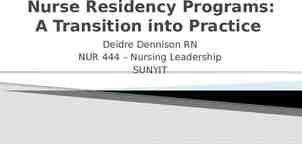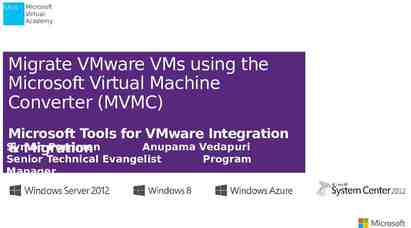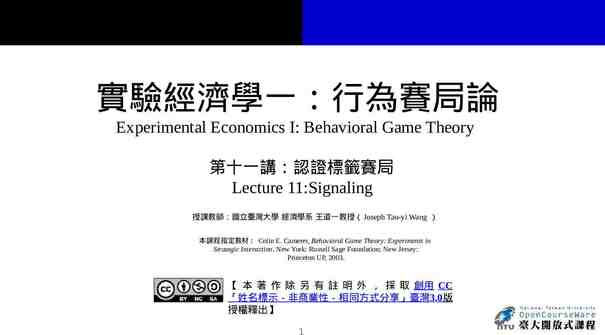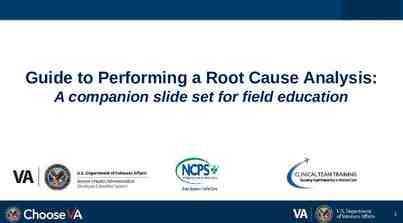Chapter 14 – The Supreme Court of the United States
42 Slides249.57 KB

Chapter 14 – The Supreme Court of the United States

The Function of the Supreme Court Lesson 1 Selecting Cases at the Supreme Court The Court’s primary function is to resolve disputes that arise over the meaning of federal law and the US Constitution. The Courts tries to make sure that federal law is uniform and means the same thing everywhere in the country. One of the Supreme Court’s most important powers is judicial review. Which is the power the Court has to examine the laws and actions of local, state and national governments and to overturn them if they violate the Constitution. This power is not specifically mentioned in the Constitution.

Lesson 1 Selecting Cases at the Supreme Court This power is not specifically mentioned in the Constitution. The Supreme Court first exercised this power in 1803, in the case of Marbury vs. Madison, when the justices unanimously ruled a federal law unconstitutional. Almost 10,000 cases are appealed to the Supreme Court every year. The justices only decide about 80 cases each term.

Lesson 1 Selecting Cases at the Supreme Court The Supreme Court decides which cases it will hear and rule on

Jurisdiction Chief Justice – John Roberts John Roberts – Chief Justice The Supreme Court has both original and appellate jurisdiction. Article III, Section 2, of the Constitution sets the Court’s original jurisdiction. Addressing two types of cases: Cases involving representatives of foreign governments and Certain cases in which a state is a party

Original and Appellate Jurisdiction The Supreme Court’s original jurisdiction cases form a very small part of it’s workload – an average of less than 80 case per year. Most of the cases the Court decides fall under the Court’s original jurisdiction. Under this jurisdiction, the Court hears cases appealed from lower courts of appeal, or it may hear cases from federal district courts where an act of Congress was held unconstitutional. The Supreme Court can also hear cases appealed from the highest court of a state of claims under federal law or the Constitution are involved.

Petitions for Certiorari

Petitions for Certiorari The party that appeals to the Supreme Court is generally the party who lost in a lower court – either in a federal circuit Court of Appeals of a state supreme court. To appeal, the losing party sends the Court a petition for a writ of certiorari. The Supreme Court is asked to hear the case and given reasons for doing so.

Solicitor General – the government official most often responsible for representing the federal government in court. Ian Gershengorn

Selecting Cases to Hear It would be impossible for the justices to carefully review all these petitions on their own and do all their other work. So the justices’ law clerks each justice usually has four – assume a major role in reviewing the petitions

“Rule of Four” The law clerks’ summaries of the cases give the justices a recommendation as to whether or not each petition should be granted. The justices meet to decide which cases they will hear. If 4 of the 9 justices agree to hear a case, then the petition for certiorari is granted. This is called the “rule of four.”

Lesson 2 Deciding Cases Arguing & Deciding Cases The 9 justices: 1.Read written arguments from parties and notes from their clerks 2.Participate in one hour of oral argument for each case

Lesson 2 Arguing & Deciding Cases Each side submits a written brief, explaining how they want to Court to decide their case and the best arguments in support of that decision. An important part of their legal grief involves pointing out similar cases the Court has already decided and noting how the decisions in those cases (precedents) support their argument. Interest groups may also submit amicus curiae briefs, explaining why the case is important to their members and how they want it decided. Amicus curiae means

Oral Argument Each side has 30 minutes to present its case to the justices. In cases where the federal government is a party, a lawyer from the solicitor general’s office will usually present the oral argument for the United States

Deciding the Case Once the oral argument is completed, the justices meet in conference to discuss their ideas about the case. At the conference, the justices take a preliminary vote to either uphold or reverse the lower court decision. If the justices all agree on a unanimous ruling. If they disagree on the case, the outcome and the reasons, they issue s ruling. If they disagree on the case, they issue a majority opinion and a dissenting opinion

Enforcing Decisions In the 1960s, many state court judges and state officials sought ways to avoid enforcing the Court’s rulings on integrating schools.

Influences on the Court Public Opinion Supreme Court justices are not elected, the Court is fairly well insulated from public opinion and daily political pressures. They are aware that they rely on the cooperation and goodwill of others to enforce its decisions They know that when the Court moves too far ahead of lags too far behind public opinion, it risks losing support and diminishing its own authority.

Values of Society The values and beliefs of society influence Supreme Court justices. As society changes, attitudes and practices that were acceptable in one era may become unacceptable in another In 1896, in Plessy vs. Ferguson, the Court ruled that it was legal for Louisiana to require “separate but equal” treatment in a public accommodation (a railway car).

Lesson 3 Selecting Supreme Court Justices What affects the selection process for Supreme Court justices? a. Understanding the law b. Good education c. Ability to listen carefully d. Problem solving skills e. Ability to write and speak clearly f. Understanding of U.S. history g. Success in overcoming personal challenges

What affects the selection process for Supreme Court justices? h. A sense of fairness i. Ability to compromise j. Honesty

The Nomination and Confirmation Process Since Supreme Court justices are appointed for life and are not accountable to anyone but the law, there is much debate and discussion about who should be appointed to the Court. Interest groups also advocate for candidates of their choice. Interest groups will lobby the White House and members of the Senate Judiciary Committee to try to get appointees who might agree with their positions. Once the president has chosen a candidate, he or she will be introduced to the public and announced as the nominee

The Nomination and Confirmation Process The nominee begins working to get confirmed by the Senate. At the Senate Confirmation Hearing, senators ask the nominee questions about his or her qualifications and experiences for the job. They want to ensure that the nominee is qualified in a personal and professional sense The processes for nominating and confirming Supreme Court Justices are the same as those for other federal judges.

Constitutional Requirements 1.The person must be nominated by the president and 2.Receive the consent of the Senate Anthony Kennedy

Confirmation by the Senate Today, we expect a Supreme Court nomination to be a major political and media event. Now, confirmations are neither fast nor easy and are usually contentious Meet Robert Bork

The Process and Politics As soon as a sitting justice announces his or her retirement, or if a justice dies, both the White House and the Senate Judiciary Committee begin working on the nomination process. Presidents get a tremendous amount of advice from staff and advocacy groups and often interview a short list of candidates before announcing the nominee

The Process and the Politics Interest groups will lobby the White House and members of the Senate Judiciary Committee to try to get appointees who might agree with their positions.

Merit and Ideology One way the president can have an impact well beyond the term of the presidency is by placing someone on the Court who shares the president’s ideological perspective. Some presidents nominate judges with long public records of deciding cases that they can look to: others, by contrast nominate candidates with little of no judicial record to investigate

Representativeness The justices on the Supreme Court as of 2014 had remarkably similar law backgrounds. All attended either Harvard or Yale law schools and spent most of their professional lives wither as law school professors or involved in appellate litigation (as lawyers or judges)

Lesson 4 Constitutional Interpretation Some advocate judicial restraint others argue for judicial activism Judicial Restraint and Judicial Activism Those who support judicial restraint believe that the Court should avoid overturning laws passed by democratically elected bodies, like Congress or state legislatures. Those who support judicial activism believe the opposite: that the Court must step in when Americans’ rights are violated. This means the Court would actively help settle the difficult social and political questions of the day. Under Earl Warren, chief justice from 1953-1969, for example, the Court overturned many laws limiting the civil rights of minorities.

Judicial Restraint and Judicial Activism Judicial activism can also serve conservative goals. In the 1930s, for example, conservative justices often took activist positions against New Deal programs intended to regulate the economy. Historically, liberals have been more likely to support judicial activism, and conservatives have been more likely to support judicial restraint.

Influences on Decision Making Two major influences on the decisions justices make are stare decisis and judicial philosophy.

Stare Decisis sta·re de·ci·sis ˌsterē dəˈsīsəs/ nounLAW noun: stare decisis the legal principle of determining points in litigation according to precedent.

Precedent and Stare Decisis Stare decisis (“let the decision stand”) once the court rules on a case, its decision serves as precedent, or model, on which to base other decisions in cases that raise the same legal issue. This decision is important because it makes the law predictable. On occasion, a justice may also advocate for not adhering to precedent when he or she believes the original precedent was wrongly decided.

Interpreting the Constitution Lesson 4 Constitutional Interpretation Some advocate judicial restraint others argue for judicial activism

Judicial Restraint and Judicial Activism Those who support judicial restraint believe that the Court should avoid overturning laws passed by democratically elected bodies, like Congress or state legislatures. Those who support judicial activism believe the opposite: that the Court must step in when Americans’ rights are violated. This means the Court would actively help settle the difficult social and political questions of the day. Under Earl Warren, chief justice from 1953-1969, for example, the Court overturned many laws limiting the civil rights of minorities.

Judicial Restraint and Judicial Activism Judicial activism can also serve conservative goals. In the 1930s, for example, conservative justices often took activist positions against New Deal programs intended to regulate the economy. Historically, liberals have been more likely to support judicial activism, and conservatives have been more likely to support judicial restraint

Influences on Decision Making Two major influences on the decisions justices make are precedents and judicial philosophy. Stare decisis (“let the decision stand”) once the court rules on a case, its decision serves as precedent, or model, on which to base other decisions in cases that raise the same legal issue. This decision is important because it makes the law predictable.

Precedent and Stare Decisis On occasion, a justice may also advocate for not adhering to precedent when he or she believes the original precedent was wrongly decided.

Judicial Philosophy Supreme Court justices explain their decisions in terms of law and precedents. Originalists believe that the best way to figure out what the Constitution means today is to look at the original understanding of the people who ratified the Constitution or its amendments. For example, originalists would assert that whatever “cruel and unusual punishment” meant when the 8th Amendment was adopted in 1791 is what it means today. If there is a need to change the meaning of the Constitution, then originalists believe that change should come through the democratic process – by amending the document.

The Supreme Court Four Republicans and four Democrats with one to replace for now

Judicial Philosophy A different approach is what might be called the “living” Constitution or what one justice has called the “active liberty” philosophy. Supporters of this philosophy believe that the meaning of the Constitution must evolve because it is a living document. Critics of the living constitution say that it is an invitation for judges to make up the law.

Checks and Balances of the Supreme Court The president has the power to appoint justices, while the Senate has the power to reject those appointments. If the people do not like a Supreme Court ruling about the Constitution, however, they must go through the more difficult process of amending the Constitution. In an 1895 case, the Court ruled that a tax on incomes was unconstitutional. The 16th amendment, ratified in 1913, allowed Congress to levy an income tax.






